When it comes to board games in the 1980s it seems that there were plenty to be had, and many were based loosely on Monopoly. That certainly seems to be the case with Chainstore. A game which describes itself on the box as “The Highstreet [sic] Battle of Takeovers and Mergers”. Not only is there the strange way of writing High Street as one word, but also having played the game I’m not all that sure about it being full of mergers anyway.
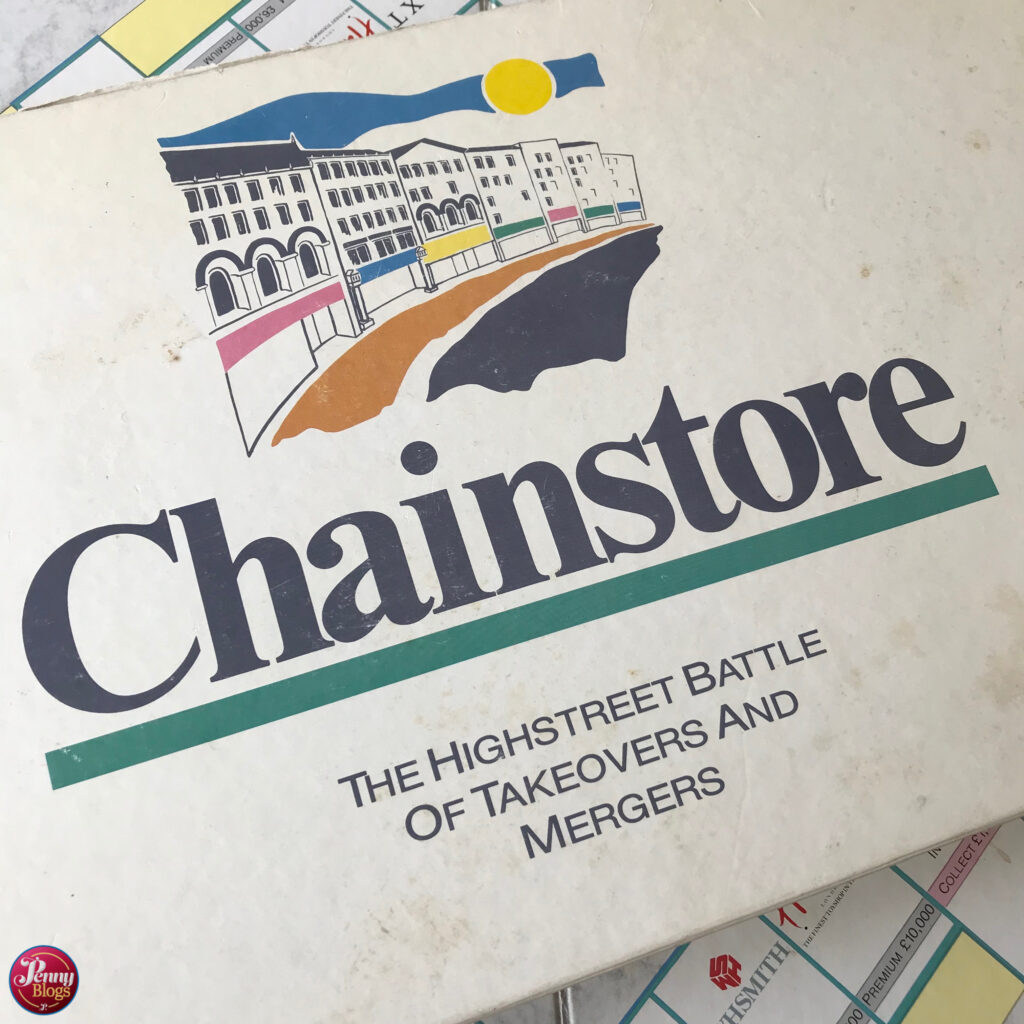
Still – on with the game…
Published by Ideas by Sears in 1987 my husband Bonn actually received Chainstore as a child, and has fond memories of playing it whilst still at primary school. The aim of the game is to be the final player standing, having either takenover or bankrupted all the other players.
The playing board is very similar to that in Monopoly, albeit positioned diagonally on the physical board. Each side is a shopping street: West End, High Street, The Precinct and Upper Mall.
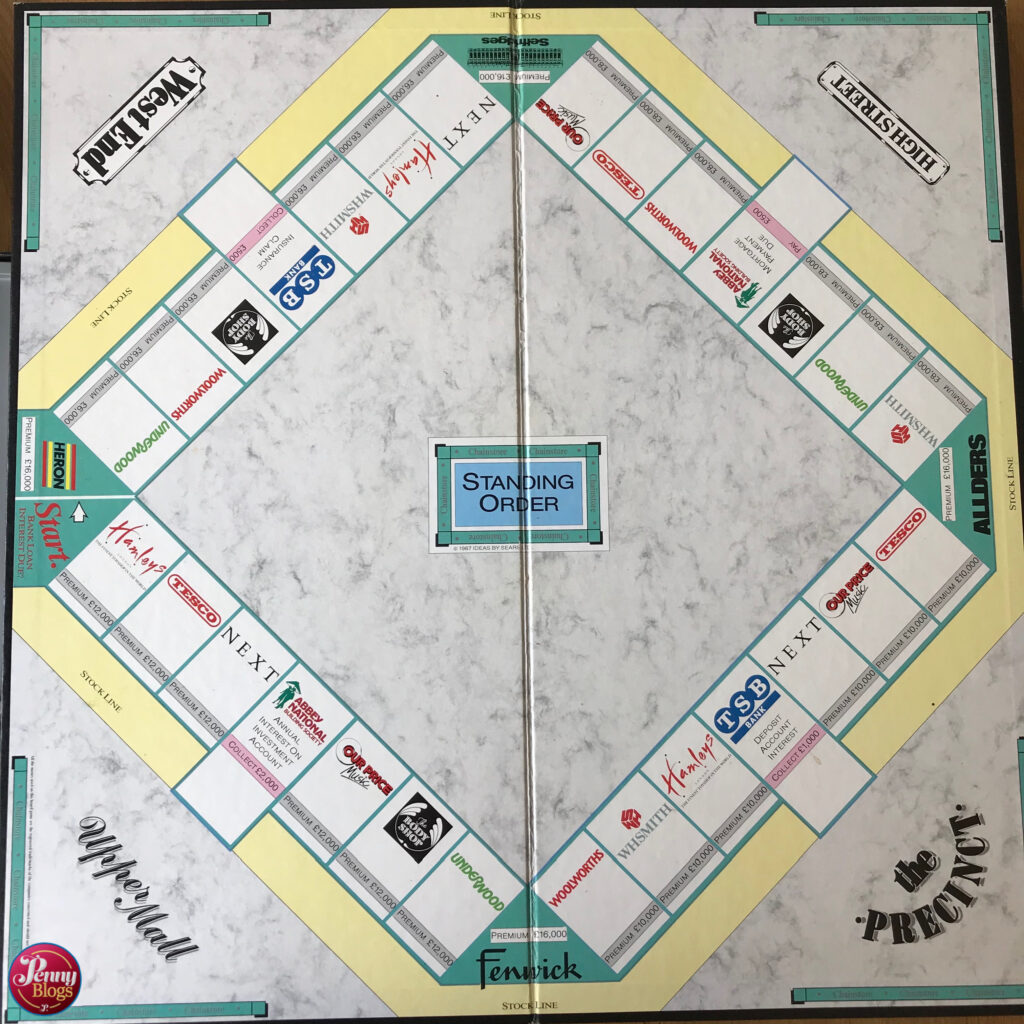
Each shopping area contains high street names from the 1980s (used under licence) and it’s wonderful to see some of the 80s logos for existing stores like Tesco and WH Smith alongside fondly remembered places like Our Price Music and Woolworths.
Who were Underwoods in Chainstore?
Also on there is a store called Underwood. None of us playing had any idea who they were and google sadly didn’t give us much information either. Asking on Twitter suggests that they might have been a Chemists chain that was eventually bought out by Boots, but again they don’t feature in the Boots online history pages which otherwise seem quite comprehensive. If you know who they were then we’d love to know.
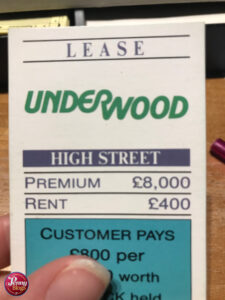
On three corners of the playing board are department stores: Selfridges, Allders and Fenwick. As players go round the board initially they are able to choose to buy the stores that they land on. If they own all stores in a chain, or one of the department stores, then they are then allowed to buy stock to go into those stores. This is much like owning a colour group in Monopoly and then being able to place houses or hotels on them properties.
Stock in Stores
In Chainstore the stock takes the form of small little bits of plastic with values written on them. They are supposed to go in the yellow band next to the shops on the board, but 0players have to be careful not to accidentally nudge them as they move their counters round the board.
Once a store has stock in it other players might have to make a purchase in the store when you they land on it. The amount they have to buy depends on the amount of stock the store has, and as a general rule purchases in the stores on the Upper Mall cost more than the stores on the other streets.
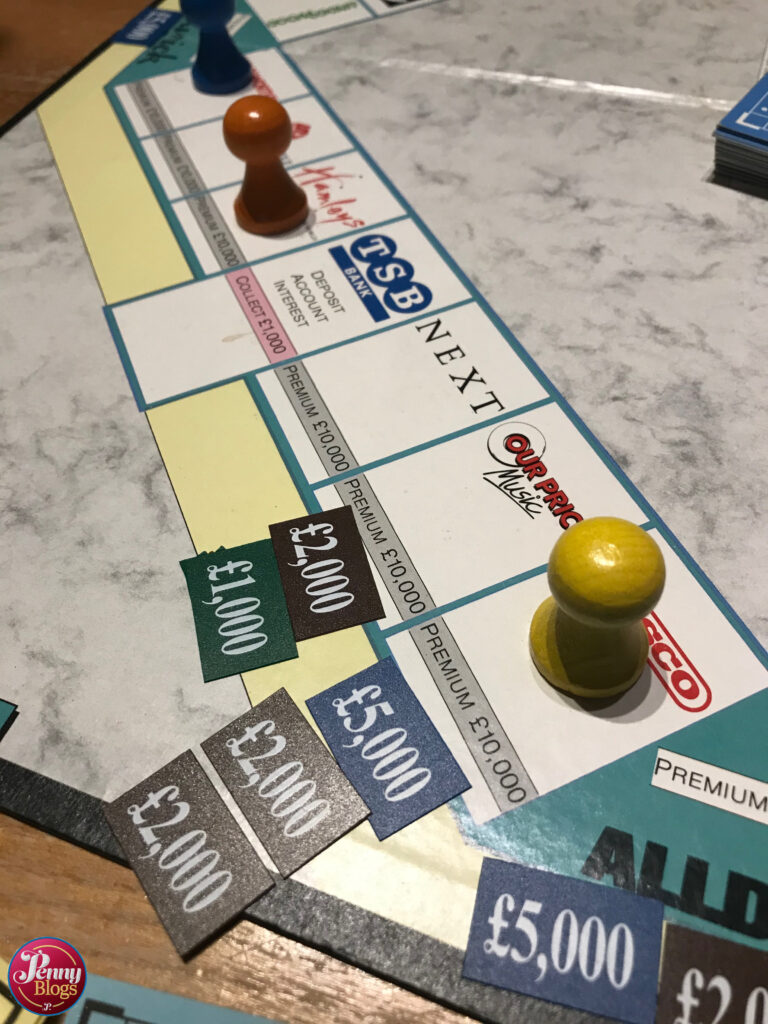
Standing Order Cards in Chainstore
I say that you “might” have to make a purchase in a store with stock because just landing on it doesn’t mean that you have to do so. After each player has rolled the dice and landed on a square they are then required to pick up a “Standing Order” card. Now this card most often says “You are a customer. Pay as instructed.” Sometimes though it says something else and you might have to pay money, or even possibly receive a grant of some form. If you’re really unlucky you might even have to pay double!
As we played Chainstore we actually found these Standing Order cards an incredibly clunky part of game play. As they so often just tell you to pay as instructed it was easy to forget to pick one up and just assume that you had to pay. Fitting in the picking up of a card once you’d moved your counter didn’t fit well into the flow of the game and you almost wonder if having a spinner instead to tell you what to do if you landed on a store wouldn’t be a better idea.
Heron
I’ve already mentioned that three corners of the playing board feature department stores, but the fourth corner is a little different. As well as containing the start square, there is also Heron on it. Now, I vaguely remember Heron as a petrol station back in the 80s and the internet seems to back up my recollections.
There’s a bit of a history of Heron service stations online, with the company first starting in 1966, but it seems they kept coming and going from the market with a resurgence in the late 80s, which would tie in with Chainstore being released.
In Chainstore when a player owns Heron it means that all other players who pass have to pay £100 times the lower number thrown on each passing, double on landing. Now that’s a lovely steady income for a player and can really help set someone up to win the game.
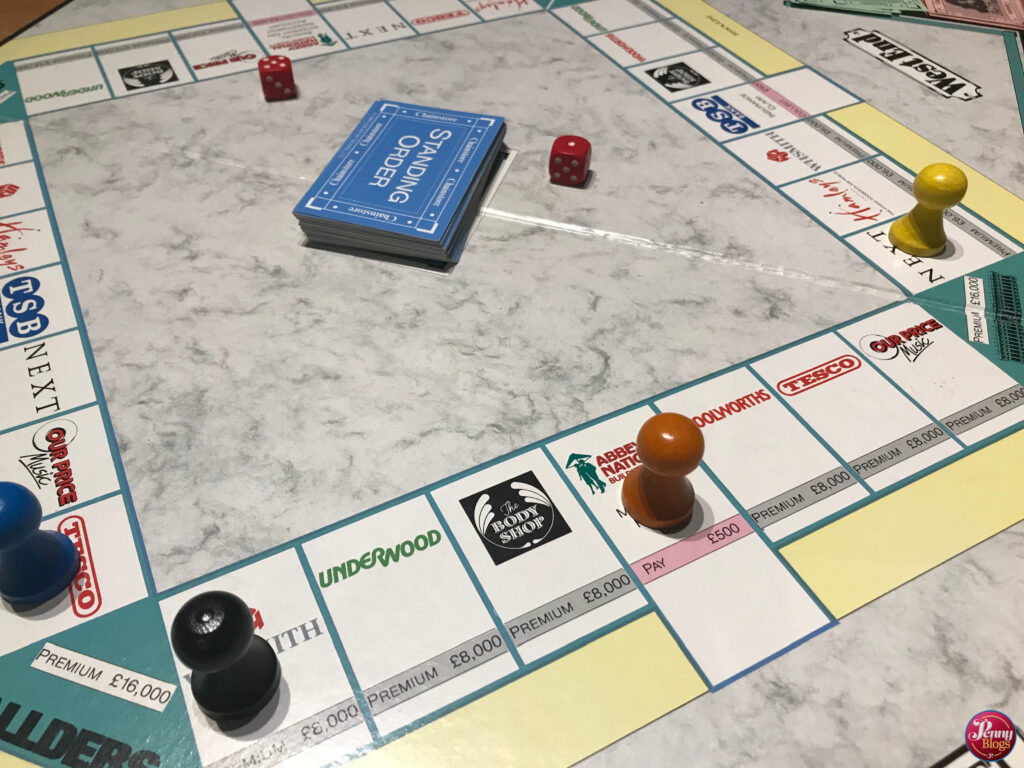
Takeovers and Mergers
Despite the tag line in the game’s title, I’m not convinced that Takeovers and Mergers is really that big a part of Chainstore. Maybe that’s just the way we played it though. When we played Chainstore we never managed to actually get to a stage where all the shops on the board were owned. The department stores were, but only a couple of chains of stores. There was some negotiations and swapping of stores to enable players to own a chain and be able to buy stock. I guess those are Takeovers.
When you read the rulebook it goes into quite a bit off information about Mergers and to be honest it confused us a little. It explained how two players can merge to form one unit, but both players still move their counters around the board independently – meaning that the merged store effectively gets two turns. What’s not totally clear is if the money is merged as it talks about bank interest is payable by one partner only, whilst each partner brings income and expenses individually to the merger. If they keep their own money, does that mean that each player contributes an equal amount to everything?
We decided none of us liked the other player enough to want to merge with them!
What we thought of Chainstore
We played Chainstore initially as one of our lockdown board games via Skype and all of us straight away could see the resemblance to Monopoly. There were a few questions that we had though – like why they didn’t go for ten squares along each side of the board. Possibly because it would infringe on Monopoly copyright somewhat.
There were comments also about the poor use of colour on the cards for the stores that players can buy and own. On the board itself you need to look closely to see which street each side of the playing board is, and it’s a shame that the property cards don’t use colour to make matching up chains easier. It may well be that this is again due to Monopoly copyright. Just looking at the photos that I’ve included in this review, you can see how pale everything in the game looks.
The concept of stock in shops is a nice one, but we felt that it could be tailored slightly to be more appropriate to the actual stores on the board. So like groceries from Tesco, or CDs from Our Price. The actual stock pieces of plastic are somewhat fiddly to use during the game and are a bit of a contrast from the lovely chunky wooden playing pieces.
Overall, there’s a certain nostalgia value to the game, but I’m not totally convinced by the mechanics of play. It’s a game that will definitely be staying in our collection though.
Are you a fan of vintage board games?
If you’re interested in vintage board games then why not head over to Facebook and join our new vintage board games group.
For more vintage board games and toys here on Penny Plays take a look here.

Leave a Reply